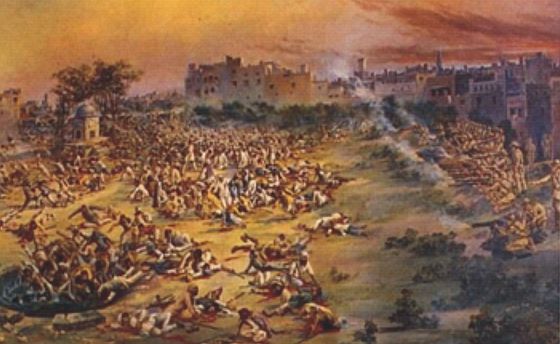
William Dalrymple writes: On 13 April 1919 a large group of Punjabis protesting against British rule gathered in the Jallianwala Bagh in Amritsar. They were incensed at the arrest of two of their leaders, and for 24 hours the city had been consumed by riots. At five in the afternoon, General Reginald Dyer marched into Jallianwala Bagh with 140 troops, most of them Gurkhas, but with a few Sikhs and Baluchis as well. Having blocked the exits, they fired into the peaceful and unresisting crowds until they had exhausted all their ammunition. Official estimates put the casualties at 379 killed and 1,200 injured. Popular estimates put the casualties as much as 10 times higher.
The massacre was a major turning point for the Indian freedom struggle and, along with Gandhi’s Salt March 11 years later in 1930, was one of the two forces that gave India’s march towards independence its unstoppable momentum. For a generation of Anglophile Indians brought up on British propaganda that British rule was just and uncorrupt, and that it had replaced centuries of arbitrary tyranny at the hands of brutal Muslim invaders, Jallianwala Bagh was a moment of revelation. Rabindranath Tagore immediately gave back his knighthood. The Nehrus were radicalised overnight. Gandhi lost his faith – intact until that point – in British justice, and wrote that he had “underrated the forces of evil” in the British empire.
But Jallianwala Bagh was by no means the worst atrocity committed by the British in India. Following the British conquest of Bengal in 1757, the province was left devastated by war and high taxation, then stricken by famine. According to Edmund Burke, the women of Bengal suffered mass rape at the hands of East India Company tax collectors. Certainly the wealth of Bengal rapidly drained into British bank accounts, while its prosperous weavers and artisans were coerced “like so many slaves” by their new British masters, and the markets flooded with British products.
More horrific still were the actions of the British army sent into Afghanistan in 1842 to take revenge for the massacre of troops during the retreat from Kabul earlier in the year. All the villages in its path were looted and torched and the women were raped. When the army got to Kabul the city was deliberately consigned to the flames. [Continue reading…]

